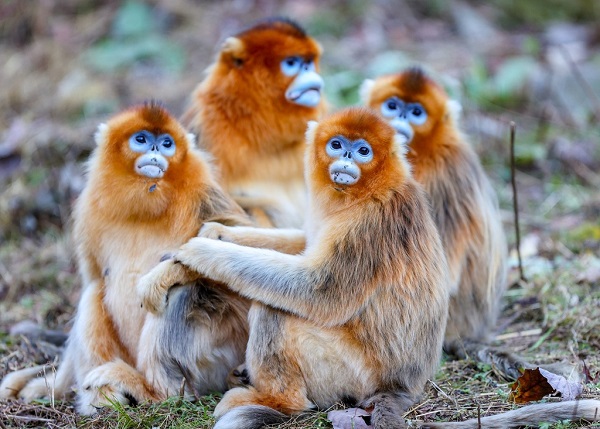Mandrill Blog Post 4
The Mandrill
Blog Post 4
Communication, Social Behaviors, and Cognitive Abilities
Communication:
While Mandrills communicate in a wide variety of ways, their main form of communication is through complex vocalization. These sounds include barks, grunts, and screams all of which have a different meaning to the Mandrill. Mandrills grunts are usually used to maintain in contact with their group or as a passing greeting. Barks on the other hand are usually higher pitched noises used to warn other Mandrills of threats or as a sign of aggression. Lastly their screams are the loudest and highest pitched noise they can make. These are used to indicate fear or for alarm calls(Elster 2023).
Grunt: Low-pitched, used for basic communication
Barks: Slightly higher pitched, warning or sign of aggression
Scream: Very High Pitched, used for alarm calls
Video: Mandrill call at the LA Zoo
Communication Continued:
Mandrills also communicate through scent glad located on their chest and genitals. These scent glands allows other Mandrills to know the fertility status of a female, social rank of both males and females, and what sex the individual mandrill is (Elster 2023). Lastly Mandrills communicates through visual displays. These can include the baring of teeth or showing the whites of their eyes. Mandrills also have bright coloring around their chest, face, and back which is another form of visual communication. Mandrills use all of these forms of visual communication to help signify social status, intentions, or mating readiness (Elster 2023).
Social Behaviors and Cognitive Abilities:
Mandrills display multitudes of complex social behaviors. These social behaviors also give us an insight as to their intelligence and cognitive abilities. To start off Mandrills live in hordes that are divided into smaller family groups called troops(Denver Zoo, 2024). This sign of complex behavior allows us to see that Mandrills can frequently work together for a common goal while still maintaining a sense of individuality. During non mating season, the males of the group will live in bachelor groups while the females stay within their natal group. This leads to a strong mother-daughter bond in which the females rank is inherited (Denver Zoo, 2024). Lastly Mandrills communicate through a wide variety of means including vocalization, body language/ visual communication, and scent marking. Each one of their communication methods is used to convey a different meaning. This should also suggest a very high cognitive ability within the Mandrill as they have to know and understand what each form of communication means and how to use it. These communication methods also allow the Mandrills to convey more complex messages than some other primates again indicating high levels of intelligence and emotional awareness.
References:
Denver Zoo. (2024, July 3). Mandrill. Denver Zoo. https://denverzoo.org/animals/mandrill/
Elster, E. (2024a, March 8). Mandrill, Mandrillus Sphinx - New england primate conservancy. New England Primate Conservancy . https://neprimateconservancy.org/mandrill/#:~:text=Mandrills%20partially%20communicate%20through%20complex,%2C%20hierarchical%20rank%2C%20and%20fertility.





Comments
Post a Comment